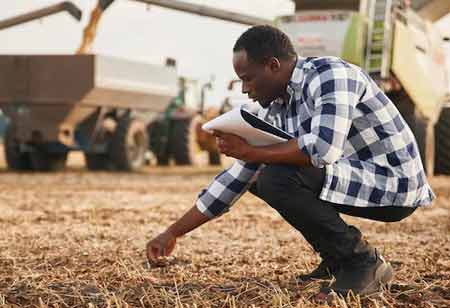Thank you for Subscribing to Agri Business Review Weekly Brief
Addressing Key Barriers in Agricultural Testing
griculture has always been connected to soil quality. Traditional farming causes soil degradation, nutrient depletion, and erosion, making it unsuitable for long-term sustainability.

By
Agri Business Review | Wednesday, July 23, 2025
Stay ahead of the industry with exclusive feature stories on the top companies, expert insights and the latest news delivered straight to your inbox. Subscribe today.
Fremont, CA: Agricultural testing plays a vital role in modern farming by ensuring soil health, enhancing crop quality, and boosting overall agricultural productivity. However, its adoption and effectiveness are often hampered by a range of challenges. These include technical limitations, logistical difficulties, economic constraints, and a general lack of awareness—all of which create significant barriers to implementing sustainable agricultural practices. A major issue is the limited access many farmers have to reliable laboratories for testing soil, water, or crop samples, making timely and informed decision-making more difficult.
Transporting samples to distant labs can be time-consuming and costly, discouraging farmers from using these services. The lack of well-distributed and adequately equipped testing centers exacerbates this issue, limiting the reach of agricultural testing to a smaller segment of the farming community. Comprehensive testing, particularly for advanced analyses such as pesticide residue testing or genetic profiling of seeds, often requires sophisticated equipment and expertise, leading to high service fees. The costs deter farmers from adopting testing as a routine practice despite its potential to improve yields and reduce losses.
Limited awareness and knowledge among farmers further compound the challenges of agricultural testing. Many farmers in developing regions are unaware of the benefits of testing or lack the technical understanding to interpret results and implement recommended practices. This knowledge gap reduces the perceived value of agricultural testing, leading to underutilization. Extension services, which could bridge this gap, are often insufficient or poorly funded, leaving farmers without the guidance to make informed decisions. The variability in testing standards and accuracy is another challenge that undermines confidence in agricultural testing.
Not all laboratories adhere to standardized procedures, leading to inconsistent or unreliable results. This lack of uniformity can confuse farmers and reduce trust in the testing process. Rapid technological advancements in testing methods sometimes outpace regulatory frameworks, creating quality assurance and oversight gaps. Technological and logistical barriers play a significant role in complicating agricultural testing. For instance, traditional soil and water testing methods can be time-consuming, requiring days or weeks for results.
While advanced technologies such as remote sensing, portable testing kits, and digital platforms have the potential to address these issues, their adoption by cost, technical expertise, and infrastructure challenges. Another pressing issue is the environmental complexity of agricultural systems, making accurate testing and analysis daunting. Factors such as soil heterogeneity, climate variability, and diverse crop types complicate agrarian testing. Changing weather patterns can affect the reliability of test results, complicating the process of drawing actionable conclusions.
While testing generates valuable data, its practical use depends on integrating it with broader farming practices and technologies. Many farmers lack access to platforms that consolidate testing data with information from sensors, drones, and other precision agriculture tools. Without seamless data integration, the full potential of agricultural testing remains unrealized, limiting its impact on improving productivity and sustainability.





